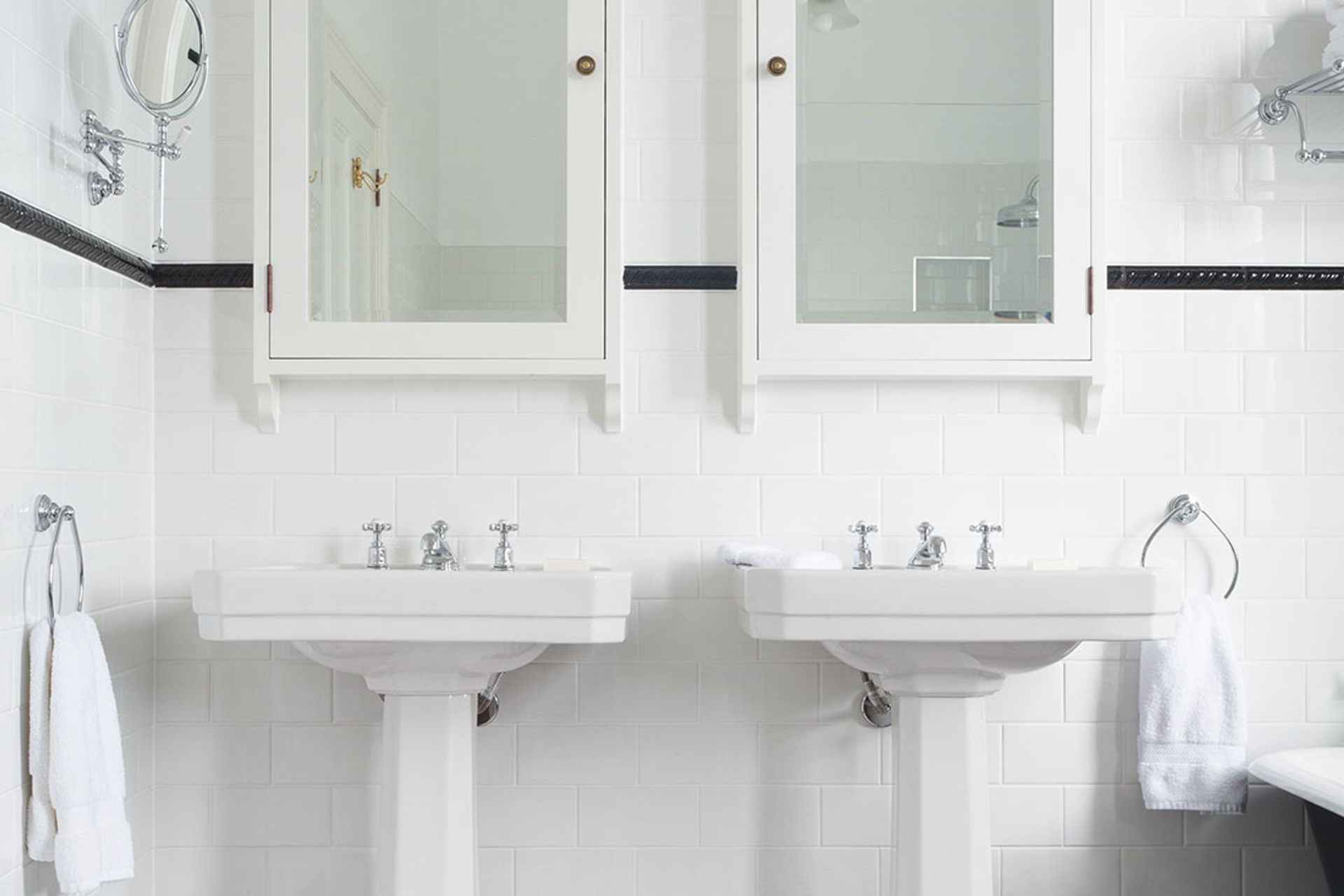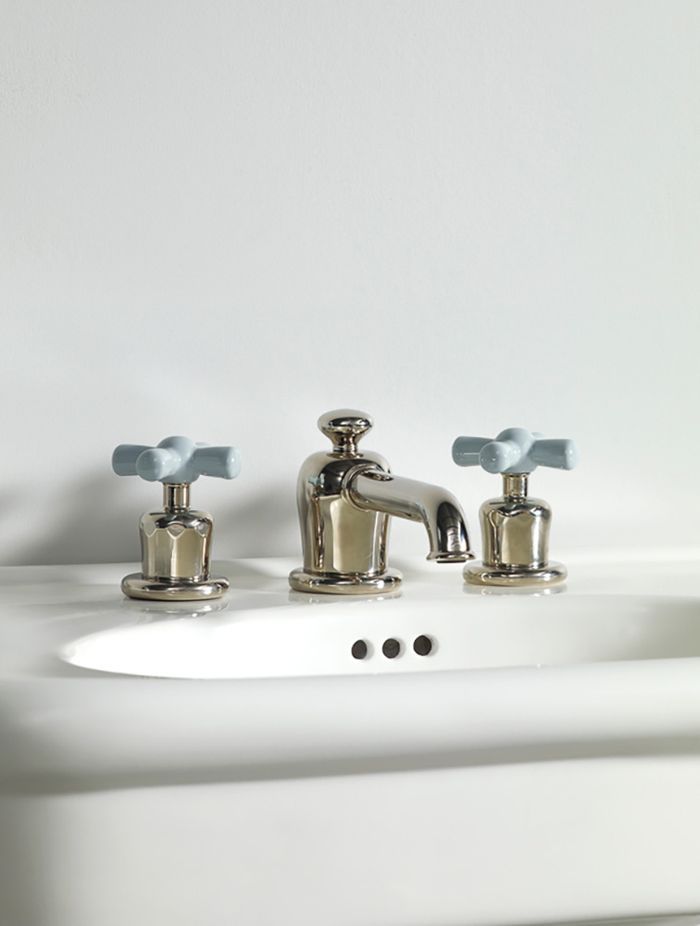11 different types of taps for bathrooms – a complete guide

While bathroom tapware may seem like a minor element, it plays a vital role in your bathroom's style and usability. With a wide variety of tap types available, each offering unique benefits and aesthetic appeal, selecting the right one can feel overwhelming. Fortunately, it only takes a small overview of the available types to understand which is best suited for your bathroom.

1. Wall-mounted taps
Wall-mounted taps attach directly to the wall above the sink or bath. They have become popular in recent years for the sleek designs they offer. This tap style is easy to clean and looks great with any design. However, they can be tricky to install because the plumbing is behind the wall of the sink or tub. You'll need to hire a bathroom professional to install the tap as the plumbing can be slightly more complex but it’s well worth the expense.

2. Floor-mounted taps
Floor-mounted taps have taken the design world by storm for the sleek and stylish look they add to a bathroom. These taps add a bit of vintage flair when positioned next to a freestanding or clawfoot tub. They're mostly used for bathtubs rather than sinks. They're loved for their flexibility when it comes to bathtub placement, allowing it to be placed anywhere in the room. But the dimensions can be tricky with floor-mounted taps as you have to consider placement and tub size.

3. Deck-mounted taps
The most common mount is the deck-mounted tap. These taps are directly installed on the sink, countertop, or side of the bathtub. They can be vintage or traditional. However, deck-mounted taps are often limited in style, as only certain taps work with the space that the deck provides.

4. Mixer taps
Mixer taps are popular in modern bathrooms since they feature a single nozzle that runs both hot and cold water. This style allows you to create the perfect temperature based on how much hot and cold you let run. Mixer taps are especially great for those who like to have baths and want to control the temperature of the bathwater.

5. Pillar taps
The pillar tap has independent valves to control the water flow. There are two tap holes for hot and cold water, respectively. This is a standard tap for most homes but often comes in various styles to match any bathroom design.
6. Monoblock taps
The monoblock tap has a single control to turn on the water and adjust the temperature. Loved for their sleek design, they're mounted on the countertop or the sink basin. A monoblock tap is ideal for a simple and functional bathroom.

7. Filler taps
Filler taps have two taps that flow into a shared water outlet. This allows you to customise a temperature and is ideal for those who like to run a bath. Filler taps also work great with low water pressure.
8. Ball taps
Ball taps are more common in commercial uses, but you can find these taps for home use in kitchens and bathrooms. These have a hollow ball inside that controls the temperature and the flow. One complaint about this style of tap is that it leaks more often.
9. Sensor taps
Sensor or touchless taps are a modern and hygienic option for bathrooms. These taps use infrared technology to detect hand movement, allowing water to flow without physical contact. Sensor taps are particularly beneficial in reducing water wastage and preventing the spread of germs.
Related article: 9 exciting bathroom tap trends for 2025
10. Bridge taps
Bridge taps offer a classic and elegant aesthetic, often associated with traditional or farmhouse-style bathrooms. These taps feature two handles (for hot and cold water) connected by a "bridge" that merges into a single spout. Bridge taps can be mounted on a sink or countertop and come in a variety of finishes, from polished chrome to antique brass.
Related article: 13 of the best bathroom taps in Australia
11. Filtered water taps
Filtered water taps combine practicality with wellness by providing clean, purified water directly from your bathroom sink. These taps integrate a built-in filtration system that removes impurities like chlorine, heavy metals, and sediments. They are particularly useful for sensitive skin or allergies, as filtered water can help minimise irritation during skincare routines or shaving.

Details to look for with bathroom taps
Because bathroom taps combine style and function, it's important to consider both factors. You don't want to fall in love with a tap that's completely incompatible with your bathroom's anatomy. So here are a few basic details to look for before choosing a tap style.
Size of the fixture
One of the first details you should look at is the size of the fixture. This is especially true of sink taps, where space may be limited or has to be precise. The base size may not fit on every countertop or take up too much of the shower wall. The size of the faucet may be too large or too small for the area you're installing it. Be sure to keep in mind the dimensions of the tap and the space you have.
Number of tap holes
This can go unnoticed until you realise the tap you purchased is incompatible. How many holes does the tap need to function, and how many are available where you want to put it? You'll often find taps that require either one, two, or three holes, though with added accessories, they can use more. The number of required holes can also play a role in the look of the tap.
Hidden hardware
It's possible to fall in love with the look of a tap and think it will work for your space, only to find out that it won't because of hidden hardware. Hardware in the walls, like tubes and pipes, could dictate what kind of taps your bathroom can use. Before looking at taps, try to see if you have any hardware that would limit your choices.
Related article: 6 most popular types of taps used in Australia in 2024

Know the different types of taps for bathroom sinks and tubs
One often overlooked detail in a bathroom renovation is the tap. A bathroom tap provides aesthetics and function to your interior design. Knowing the different types of taps for bathroom sinks and tubs is key to elevating these fixtures to ones that will work well, look stylish and stand the test of time.
This article was updated on 2nd December 2024
Browse a collection of premium bathroom tapware from trusted Australian suppliers on ArchiPro
